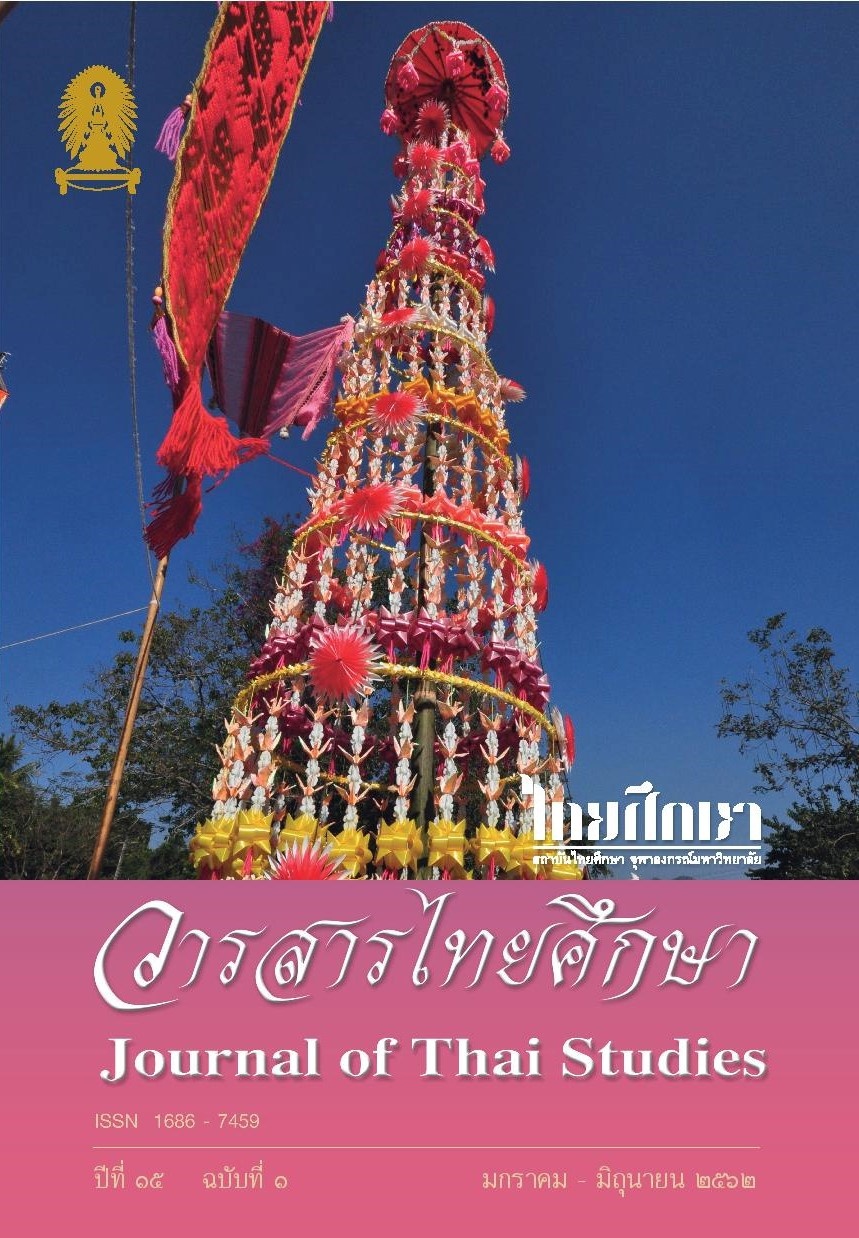The Development Model for Museum and Contemporary Arts Gallery Management in the Context of the Creative City and the ASEAN Socio-Cultural Community-ASCC
Main Article Content
Abstract
The development model for museum and contemporary art gallery management in the context of the Creative City and the ASEAN Socio-Cultural Community-ASCC has two purposes. Firstly, to specify the style of management of contemporary museums and galleries in Thailand during the period of entry into the ASEAN Socio-Cultural Community-ASCC. Secondly, to provide guidance on the development of contemporary art museum and gallery management in the context of creative cities and the entry into the ASEAN Socio-Cultural Community-ASCC.
The results of the first objective of this research is to specify the style of management of contemporary museums and galleries in Thailand during the period of entry into the ASEAN Socio-Cultural Community-ASCC. Group 1: National museums and galleries were found to have an administrative model for learning and disseminating cultural knowledge to the people; budget and revenue provisions are subject to state oversight; space management links public policy to the people through cultural and artistic activities; the use of innovative media outlets. Group 2: Provencal museums and galleries were found to have an administrative style similar to that of the group of the national museums and galleries, with a strong network of cooperation with outside organizations in the province and across provinces; local media is used for the media development; the focus of activities is linked to the policy of the province. Group 3: For university museums and galleries, it was found that there is a centralized administration model, however a distinctive feature is the networking of relationships and managed to be a learning resource that supports the educational mission, as well as being a place for artists, academics and the public. Group 4: For private museums and galleries, each museum and gallery exhibits a variety of management styles and flexibility; personnel often perform multiple functions; networking with external organizations and space management has been featured in each area.
The results of the second objective of this research is to provide guidance on the development of contemporary art museum and gallery management in the context of creative cities and the entry into the ASEAN Socio-Cultural Community-ASCC. The results are as follows. Group 1: For national museums and galleries, it was found that they have implemented the policies to their management approach. Group 2: For provincial museums and galleries, it was found that they also have implement the policies to their management approach, which is a plan to educate and understand ASEAN Socio-Cultural Community-ASCC at the personnel level; management plans for continuity has not yet appeared. Group 3: For university museums and galleries, it was found that they have also implement the policies to their management approach; however, the importance depends on the management of each organization. Group 4: For private museums and galleries, it was found that most do not pay attention to the policies; which is an urgent matter because of their concern of these policies before the government has set and promoted the policies; private museums and galleries also propose a management approach for sustainability.
What will make the Thai art world follow the neighboring ASEAN is to adapt and implant ideas of creativity in the education system. Understanding the diversity of cultures in the ASEAN region will lead to exchanges and furtherance of contemporary art.
Downloads
Article Details

This work is licensed under a Creative Commons Attribution-NonCommercial-NoDerivatives 4.0 International License.
Journal of Thai studies is licensed under a Creative Commons Attribution-Noncommercial-NoDerivatives4.0 Intenational (CC BY-NC-ND 4.0) licence, unless otherwise stated. Plese read our Policies page for more information on Open Access, copyright and permissions.
References
BACC. (2015). Silapa Sang mueng: lao rueng mueng sangsan [Art for foundation of cities: Accounts of creative cities]. Retrieved from www.bacc.or.th/event/BACC- Art-Talk-2015-1.html
Bangkok Art and Culture Centre. (2017). Bangkok Art and Culture Centre Background. Retrieved from: http://www.bacc.or.th
ICOM. (2004, March 24). Development of the Definition of Museums according to ICOM Statues (1946 – 2001). Retrieved from: http://icom.museum/his_def_eng.html.
Kaewlai, P. and Janjamlha, T. (2013). Mueng Sangsan: Naewthang kan pattana mueng chak sinsup sangsan thongthin Thai [Creative cities: how to develop a city creatively from local Thai resources]. Bangkok: King Prajadhipok’s Institute.
Mukdamanee, W. (2017). Hosin [Art Center]. Retrieved from: http://kanchanapisek.or.th
TCDC. (2010). Creative Cities: Ruengrao khong kan bompoa kwamkid sangsan, wattanatham and meung [Creative Cities: the story of rooting and growing creativity, culture and cities]. Retrieved from creativity/5441/#Creative-City
Thepchatree, P. (2011). Prachakom ASEAN [ASEAN Community]. Bangkok: Semathum Press.
Interviews
Hemarajata, C. (2017, June 8) Personal Interview.
Larpjaroensook ,T.(2017, June 8) Personal Interview.
Kunawichayanon, L. (2017) Personal Interview.
Kunawong, S. (2017) Personal Interview.
Phukaoluan, K. (2017, August 11) Personal Interview.
Sangkanakin, N. (2017, July 20) Personal Interview.
Singyabuth, S. (2017, June 9 ) Personal Interview.
Woothaisong, W. (2017, July 3) Personal Interview.


